This article includes a list of references, related reading or external links, but its sources remain unclear because it lacks inline citations .(July 2021) |
Jan Regulski (1760 - 28 July 1807) was a Polish glyptic artist and medalist.
This article includes a list of references, related reading or external links, but its sources remain unclear because it lacks inline citations .(July 2021) |
Jan Regulski (1760 - 28 July 1807) was a Polish glyptic artist and medalist.
Regulski came from an impoverished family. His parents' names and occupations are not known. His talent was recognized as a boy by two wealthy landowners of the area, Stanisław Kostka Potocki and Ignacy Potocki, when he did carvings using an awl and knife with olive pits. The Potocki families paid for his education in national schools and then further training in Rome and Naples, which lasted until 1780. He married Marianne Chmielewska. They had three children, of whom the eldest son of Stanislaw distinguished himself as a translator and poet.
In 1783, most likely by their patrons brothers Potocki, Regulski was appointed to the royal court as an officer medal collection and other collections of King Stanisław August Poniatowski. In order to create an Academy of Fine Arts, the king was planning to entrust the management of collections of antiques. But when the creation of a new university did not happen, he instead appointed Regulski as the official Polish Mint artist. Regulski was most successful in carving gems: the image of the king as gifts, the royal family, and different depictions of the mythical, historical and contemporary. As a sculptor he represented classicism. He executed a commemorative medal engraving, and made such a medal with a portrait of the king on the obverse to commemorate the start of construction of the church of St. Providence and medal-military gift for Prince Józef.
On April 19, 1794, Regulski joined the Kościuszko Uprising. Some sources imply that it belonged to the Polish Jacobins. Soon he was brought before the court on charges of inciting the people of the capital and enforcing the Targowica Confederation, but after a hearing in the Supreme Court he was acquitted.
After the Third Partition of Poland and the start of Prussian rule in Warsaw, Regulski was favored by Frederick William II of Prussia. In 1795 he moved to Berlin, and was appointed curator of the Royal Collection. The king sent him to Italy in order to make purchases antiques to enrich the Berlin collection. When Regulski returned to the Prussian capital, the king was already Friedrich Wilhelm III. The new monarch was devoid of any interest in art, so he refused to pay for the purchases made. Regulski went with them in 1798 to Warsaw, where he devoted himself to art and enlarging his collection.
On July 28, 1807, Regulski died in Warsaw. After his death his collections were dispersed. Unfortunately, he did not always sign the gem and small sculptures, so it is difficult to figure out which of the surviving engraved gems in Polish museums and cameos are his work.

Stanisław II August, known also by his regnal Latin name Stanislaus II Augustus, was King of Poland and Grand Duke of Lithuania from 1764 to 1795, and the last monarch of the Polish–Lithuanian Commonwealth.
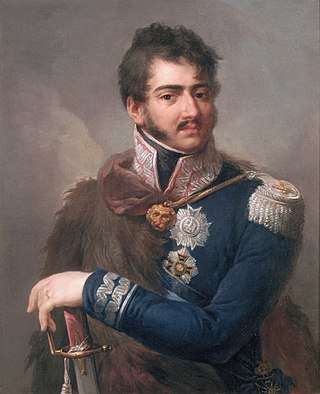
Prince Józef Antoni Poniatowski was a Polish general, minister of war and army chief, who became a Marshal of the French Empire during the Napoleonic Wars.

Count Roman Ignacy Potocki, generally known as Ignacy Potocki, was a Polish nobleman, member of the influential magnate Potocki family, owner of Klementowice and Olesin, a politician, writer, and office holder. He was the Marshal of the Permanent Council in 1778–1782, Grand Clerk of Lithuania from 1773, Court Marshal of Lithuania from 1783, Grand Marshal of Lithuania from 16 April 1791 to 1794.
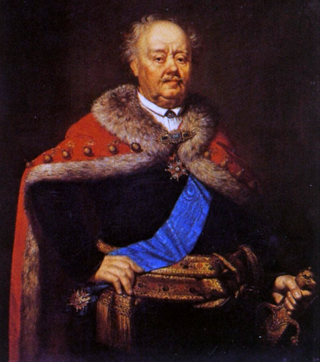
Franciszek Ksawery Branicki (1730–1819) was a Polish nobleman, magnate, French count, diplomat, politician, military commander, and one of the leaders of the Targowica Confederation. Many consider him to have been a traitor who participated with the Russians in the dismemberment of his nation.
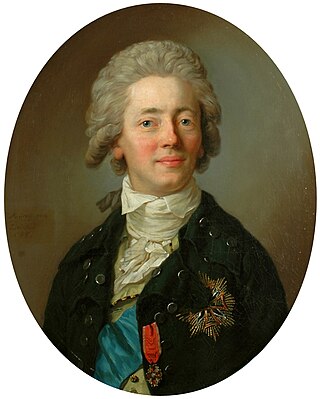
CountStanisław Kostka Potocki was a Polish nobleman, politician, writer, public intellectual and patron of the arts.

Count Stanisław Małachowski, of the Nałęcz coat-of-arms was the first Prime Minister of Poland, a member of the Polish government's Permanent Council (1776–1780), Marshal of the Crown Courts of Justice from 1774, Crown Grand Referendary (1780–1792) and Marshal of the Four-Year Sejm (1788–1792).
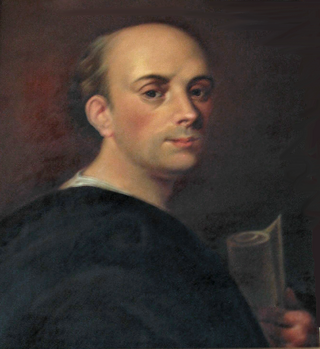
Scipione Piattoli was an Italian Catholic priest—a Piarist—an educator, writer, and political activist, and a major figure of the Enlightenment in Poland. After ten years as a professor at the University of Modena in Italy, he emigrated to the Polish–Lithuanian Commonwealth, where he became associated with several magnate families—the Potockis, Lubomirskis, and Czartoryskis. He was a member of Duchess Dorothea von Medem's court in Courland (Lithuania) and of King Stanisław August Poniatowski's court.

Count Stanisław Szczęsny Feliks Potocki, of the Piława coat of arms, known as Szczęsny Potocki was a member of the Polish szlachta and a military commander of the forces of the Polish–Lithuanian Commonwealth and then Poland. Knight of the Order of the White Eagle, awarded in August 1775.
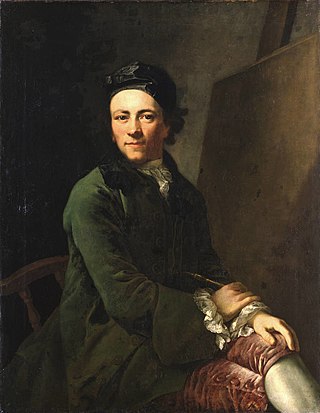
Anton Graff was an eminent Swiss portrait artist. Among his famous subjects were Friedrich Schiller, Christoph Willibald Gluck, Heinrich von Kleist, Frederick the Great, Friederike Sophie Seyler, Johann Gottfried Herder, Gotthold Ephraim Lessing, Moses Mendelssohn and Christian Felix Weiße. His pupils included Emma Körner, Philipp Otto Runge and Karl Ludwig Kaaz.
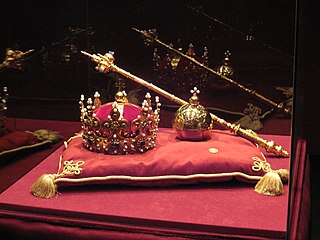
The only surviving original piece of the Polish Crown Jewels from the time of the Piast dynasty is the ceremonial sword – Szczerbiec. It is currently on display along with other preserved royal items at the Wawel Royal Castle Museum in Kraków.

Piotr Ożarowski was a Polish noble (szlachcic), politic and military commander. Member of the infamous Confederation of Targowica, he reached the offices of Great Crown Hetman and castellan of Wojnice.
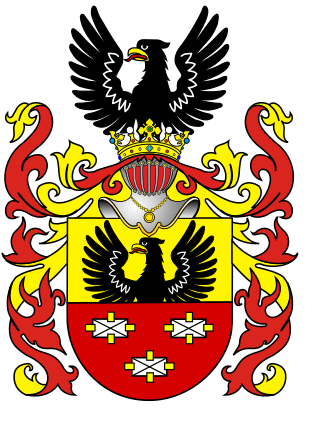
The House of Sułkowski is a Polish princely family and gentry who owned palaces in Rydzyna and Bielsko.

Łańcut Castle is a complex of historical buildings located in Łańcut, Poland. Historically the residence of the Pilecki, Lubomirski and Potocki families, the complex includes a number of buildings and is surrounded by a park.

The Warsaw Lyceum was a secondary school that existed in Warsaw, under the Kingdom of Prussia and under the Kingdom of Poland, from 1804 to its closing in 1831 by Imperial Russia following the Polish November 1830 Uprising.

The History of the Polish–Lithuanian Commonwealth (1764–1795) is concerned with the final decades of existence of the Polish–Lithuanian Commonwealth. The period, during which the declining state pursued wide-ranging reforms and was subjected to three partitions by the neighboring powers, coincides with the election and reign of the federation's last king, Stanisław August Poniatowski.

Prince Antoni Paweł Sułkowski, of the Sułkowski family, was a Polish division general and later overall commander of the armed forces of the Duchy of Warsaw.

The 1733 Polish–Lithuanian royal election was an election to decide on the new candidate for the Polish–Lithuanian throne.
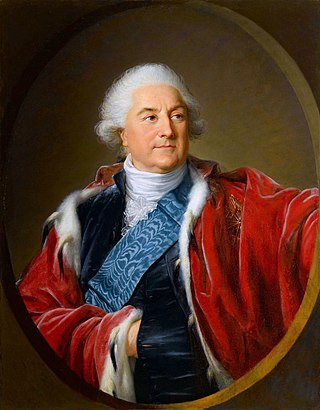
The 1764 Polish–Lithuanian royal election was an election to decide on the new candidate for the Polish–Lithuanian throne.
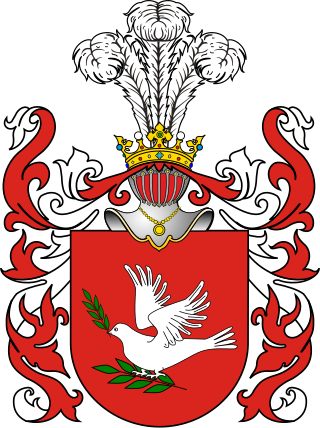
Stanisław Czerniecki was a Polish soldier, property manager, chef and writer, best known as the author of Compendium ferculorum, albo Zebranie potraw, the first cookbook written originally in the Polish language. He was an ennobled burgher who held the titular offices of royal secretary and podstoli of Zhytomyr. During much of his life he served some of the powerful magnate houses of Poland, including the Wielopolski, Zamoyski, Wiśniowiecki and Lubomirski families. It was as head chef at the court of Prince Aleksander Michał Lubomirski that Czerniecki wrote his cookery book. As a designer of spectacular banquets, he has been called "the Polish Vatel" by Karol Estreicher, although Czerniecki did not meet the tragic fate of François Vatel, the head chef at the court of the Grand Condé.

Prince Antoni Wilhelm Radziwiłł was a member of the Polish-Lithuanian nobility and a General of the Artillery in the Prussian Army. He was the nephew of Princess Elisa Radziwiłł, the first love of their kinsman King William I of Prussia, who would later become the first German Emperor.